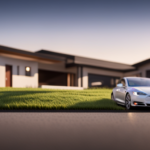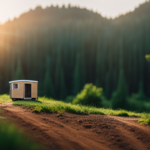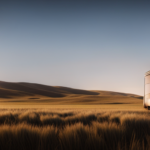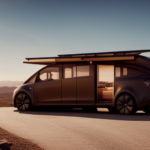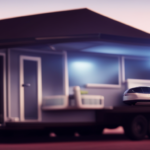General Energy Topics
How Do I Buy a Tesla Tiny House

I am here to assist you as you embark on the journey to owning a remarkable Tesla Tiny House.
Let’s dive into the steps that will lead you to your dream home on wheels.
From researching the Tesla Tiny House and exploring financing options, to contacting Tesla for purchase details and customizing your space, we’ll cover it all.
Together, we’ll finalize the purchase and delivery process, ensuring your smooth transition into the world of sustainable living.
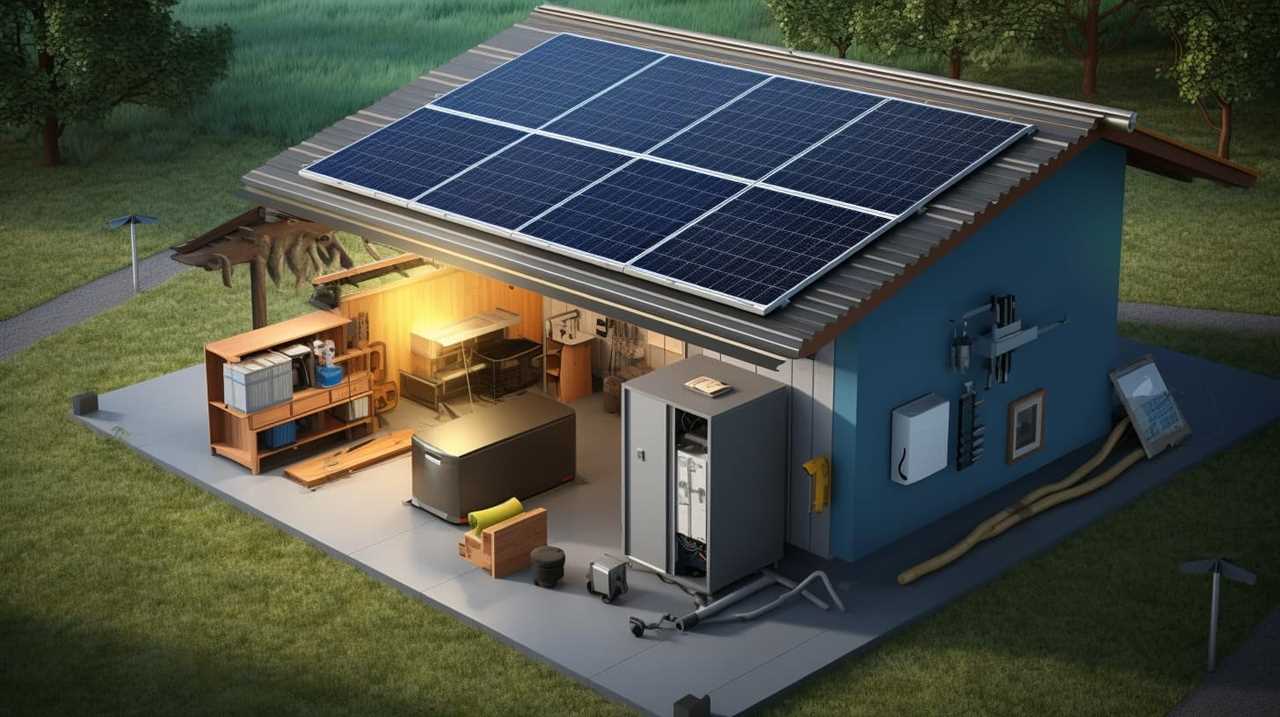
Let’s make your Tesla Tiny House dream a reality.
Key Takeaways
- Research and explore the features and specifications of the Tesla Tiny House
- Explore financing options including loan programs and in-house financing
- Contact Tesla for purchase details and warranty information
- Customize the tiny house to personal style and values
Researching the Tesla Tiny House
I’ll start by researching the Tesla Tiny House online to learn more about its features and specifications. The Tesla Tiny House is a unique and innovative concept that combines sustainable living with modern technology.
One of the key features of the Tesla Tiny House is its energy-efficient design, which includes solar panels and a Tesla Powerwall for storing and using solar energy.
The interior design of the Tesla Tiny House is sleek and modern, with a minimalistic approach that maximizes space and functionality. It offers a comfortable living space with all the necessary amenities, including a kitchen, bathroom, and sleeping area.

By exploring the Tesla Tiny House online, I can gather more information about its features and interior design, which will help me make an informed decision about purchasing one.
Now, let’s move on to exploring financing options for buying a Tesla Tiny House.
Exploring Financing Options
To explore financing options for buying a Tesla Tiny House, I’ll start by researching loan programs and payment plans that are available. When considering financing options, it’s important to understand the loan process and the different terms and conditions that may apply.
Here are some key factors to consider:
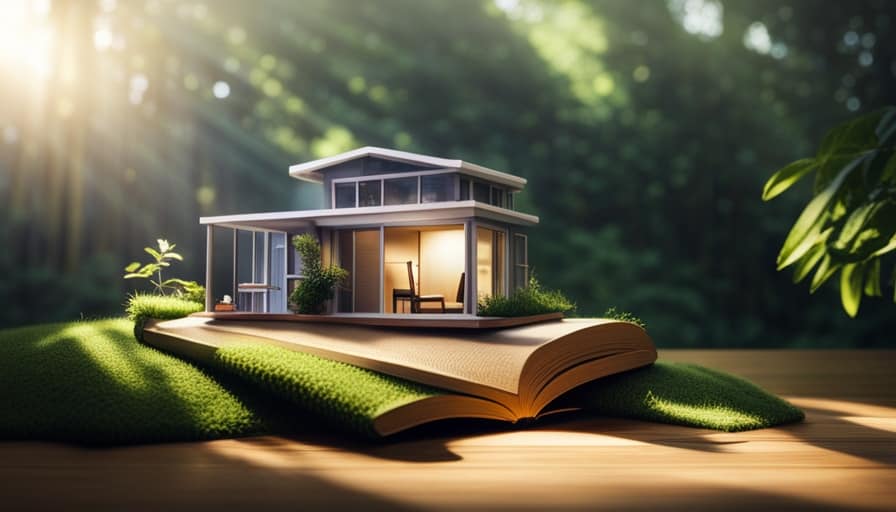
-
Loan programs: Research various financial institutions that offer loans specifically for tiny house purchases. Look for options that have competitive interest rates and flexible repayment terms.
-
Payment plans: Some sellers may offer in-house financing options or installment plans. These can be convenient if you prefer to work directly with the seller and avoid the traditional loan process.
By understanding the financing options available, you can make a well-informed decision that suits your financial situation.
Now, let’s move on to contacting Tesla for purchase details.
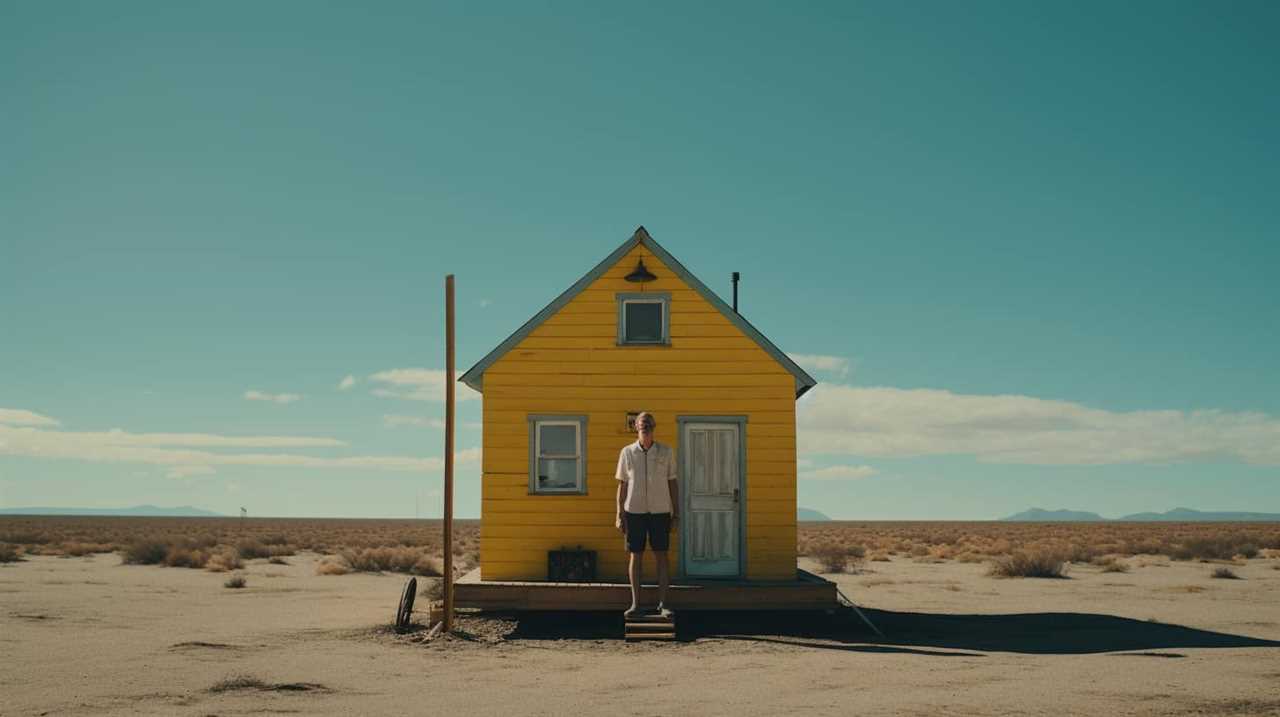
Contacting Tesla for Purchase Details
I contacted Tesla’s customer service to inquire about the purchase details of the Tesla Tiny House. The customer support representative was very friendly and knowledgeable. They provided me with all the information I needed to make an informed decision.
They explained that the Tesla Tiny House is available for purchase through the Tesla website. The price of the tiny house includes installation and delivery. They also informed me about the warranty information for the tiny house. The Tesla Tiny House comes with a warranty that covers any manufacturing defects for a specified period of time.
The customer support representative assured me that if I had any further questions or needed assistance with the purchasing process, I could reach out to them at any time.
Customizing Your Tesla Tiny House
After purchasing a Tesla Tiny House, customizing it to fit my specific needs and preferences was an exciting part of the process.
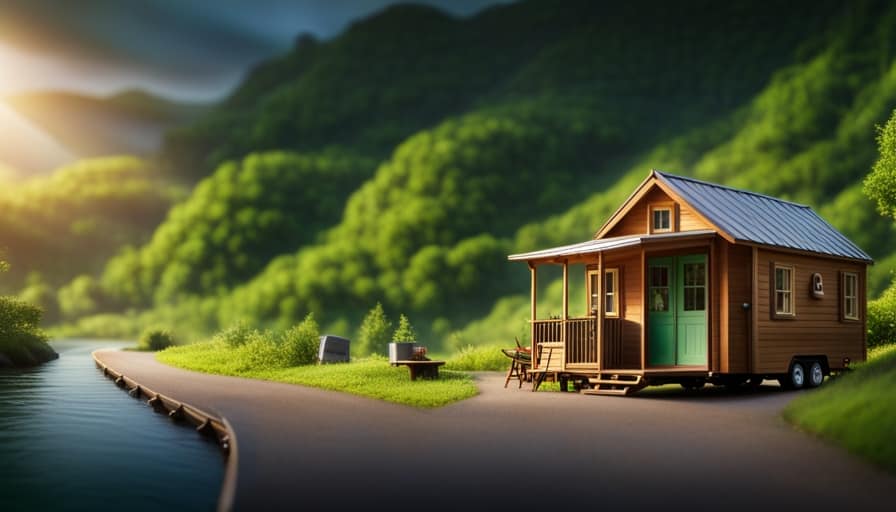
Tesla offers a range of customization options for their tiny houses, allowing you to create a space that reflects your personal style and values. When it comes to tiny house design, Tesla provides various layouts and floor plans to choose from, ensuring that you can maximize functionality and optimize space utilization.
Additionally, Tesla’s commitment to sustainability is evident in the eco-friendly features they offer. From solar panels and energy-efficient appliances to water-saving fixtures and smart home technology, you can customize your Tesla Tiny House to be environmentally friendly and reduce your carbon footprint.
With these options, you can create a personalized and sustainable living space that aligns with your values.
Finalizing the Purchase and Delivery Process
During the finalizing of the purchase and delivery process, I was able to coordinate with the Tesla team to ensure a smooth and seamless transition of my new tiny house. Scheduling the delivery of the Tesla Tiny House was a straightforward process. I provided my preferred dates and time slots, and the Tesla team worked diligently to accommodate my schedule. They kept me informed every step of the way, providing updates on the progress and estimated arrival time.
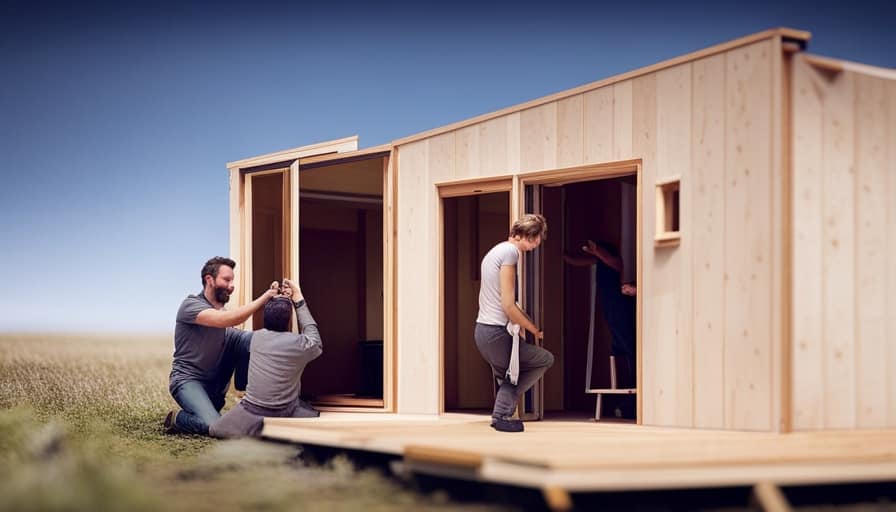
Understanding the warranty and after-sales support for my Tesla Tiny House was also essential. The Tesla team explained the warranty coverage in detail, addressing any concerns or questions I had. They assured me that they’re committed to providing exceptional after-sales support, ensuring that I’ve a reliable and enjoyable experience with my new tiny house.
Frequently Asked Questions
Can I Use Solar Power to Run My Tesla Tiny House?
Yes, you can use solar power to run your Tesla Tiny House. Solar power is a highly efficient and sustainable alternative energy source that can provide electricity to power your home.
Is the Tesla Tiny House Built With Sustainable Materials?
The Tesla Tiny House is constructed using sustainable and eco-friendly materials. It’s designed to minimize its environmental impact while providing a comfortable and efficient living space.
Can I Tow the Tesla Tiny House With Any Vehicle?
I can tow the Tesla Tiny House with certain vehicles, but there are towing capacity limitations to consider. Tesla provides sustainable towing options, ensuring that the house can be transported with minimal environmental impact.
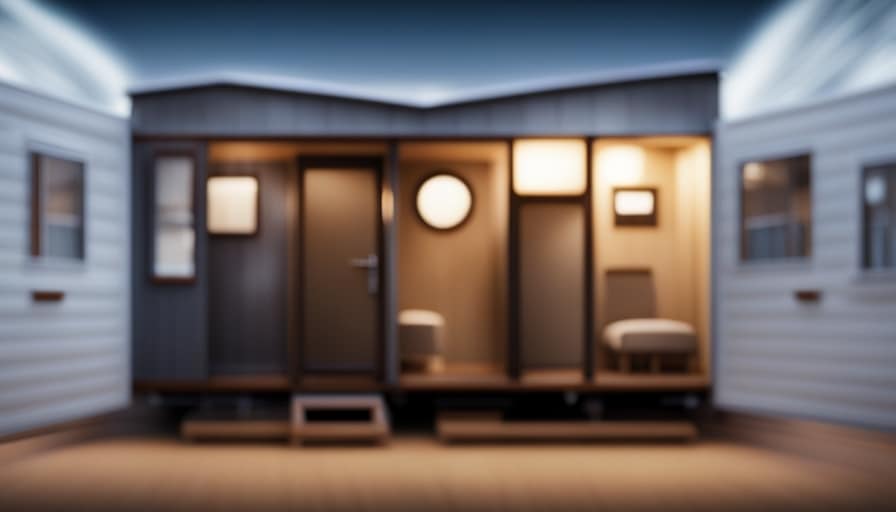
Are There Any Additional Costs Besides the Purchase Price of the Tesla Tiny House?
There may be additional costs associated with owning a Tesla Tiny House, such as maintenance fees for utilities and upkeep. It’s important to factor these expenses into your budget when considering purchasing one.
Can I Take My Tesla Tiny House Off-Grid and Live in It Full-Time?
Yes, you can take your Tesla Tiny House off-grid and live in it full-time. With its sustainable features and solar panels, it’s designed to support off-grid living and promote full-time sustainability.
Conclusion
After all the effort of researching, exploring financing options, contacting Tesla, and customizing your Tesla Tiny House, you finally have the opportunity to finalize the purchase and delivery process.
It’s ironic how something as small as a tiny house can create such a big buzz and excitement. But hey, who needs a traditional home when you can have a tiny one?
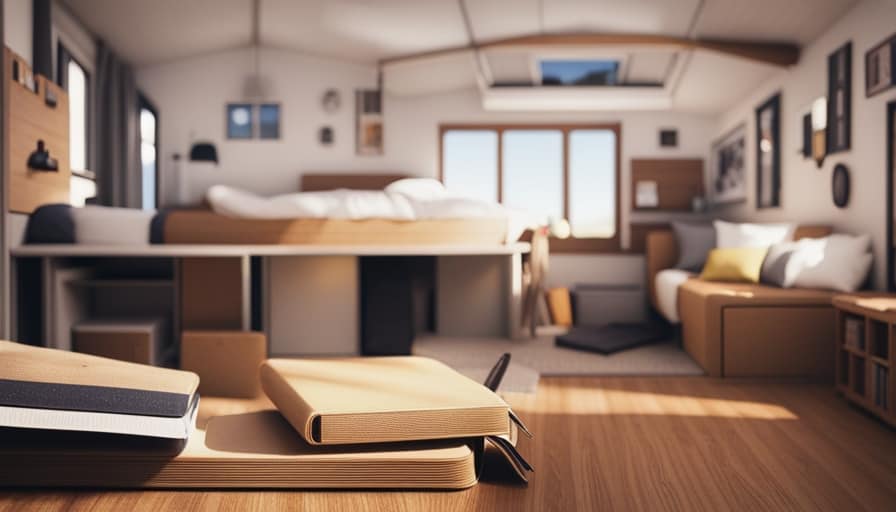
Happy living in your compact, eco-friendly abode!
I’m Theodore, and I love tiny houses. In fact, I’m the author of Tiny House 43, a book about tiny houses that are also tree houses. I think they’re magical places where imaginations can run wild and adventures are just waiting to happen.
While tree houses are often associated with childhood, they can be the perfect adult retreat. They offer a cozy space to relax and unwind, surrounded by nature. And since they’re typically built on stilts or raised platforms, they offer stunning views that traditional homes simply can’t match.
If you’re looking for a unique and romantic getaway, a tree house tiny house might just be the perfect option.
General Energy Topics
How to Find Kinetic Energy
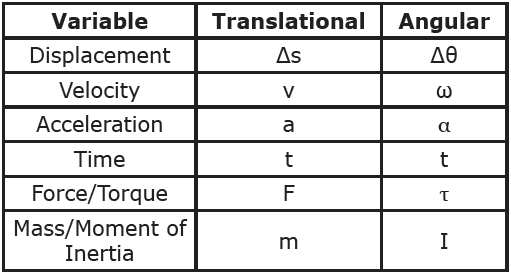
Assessing the kinetic energy of moving objects in a system can be difficult. To calculate kinetic energy, use relative velocities. Using these velocities as input makes the calculation process more predictable, simplifying it and giving a more accurate representation of the energy exchanged during an impact.

Calculate the velocity
To calculate the kinetic energy, you must determine the object’s velocity. The distance the object travels in a given time is called velocity. The formula for velocity is V = d/t. The object’s velocity is related to its energy. For example, if a person walking down the central aisle of a subway car travels at 15 km/h, their kinetic energy is three times as much as a 75 kg person walking at the same speed.
Although the kinetic energy of an object’s motion can vary depending on its frame, it is always positive. It is equal to the sum of mass and speed. If the object is moving in a confined space, its kinetic energy will be smaller than if it is moving in the air.
First, determine the mass (m), and velocity (v). This will allow you to calculate the kinetic energy. You can also calculate the mass of a particle simply by looking up its mass. You will then need to convert km into m. However, this step is not necessary as you can find out the mass of a neutron using the mass the particle.
Newtonian mechanics is the basis of the formula for kinetic energie. When an object is moving at a constant speed, the kinetic energy of that object is equal to its mass times its velocity. For objects moving at a faster speed than the speed of light, however, the kinetic energy is measured in joules.
Calculate the kinetic energy
To calculate the kinetic energy of a moving object, you must multiply its mass by the square of its velocity. The formula for kinetic energy is the same as that of potential energy. Kinetic energy is simply the energy required to move an object, from rest to its current velocity.
To calculate the kinetic energy of a bullet, you will need to know its mass and its speed. You will also need to enter the measurement unit. The default unit is the Joule, but you can change it to a different measurement if you wish. Another factor that must be considered is the escape speed – the minimum speed at which a bullet will escape from the gravitational force of the earth.
Kinetic energy is defined as the energy contained in an object when it moves. The joule is the unit of measurement for kinetic energie. This unit is equal in size to one kilogram meter squared over one second. The standard unit of kinetic energy is the joule.
A four-kilogram body moving at 36 m/s will have twelve thousand joules of kinetic energy before it hits water. Comparing that to an eight-kilogram body, you will see that the kinetic energy of a 5.0 kg body is threefold greater than the 8.0.
The kinetic energy equation can also be used to calculate dynamic pressure of fluids. To calculate the fluid’s dynamic pressure, you can replace mass with density and solve KE. Once you have calculated the kinetic energy of a fluid, you can calculate its dynamic pressure using the kinetic energy calculator.
Calculate the kinetic energy per unit volume
The kinetic energy per unit volume is equal to the fluid’s mass divided by its volume. This quantity is also known as the dynamic pressure. It can be calculated by using a kinetic energy calculator. This calculator will also consider the fluid’s density.
The kinetic energy formula helps to understand how much mass an object has and how that mass affects its velocity. This formula can be applied to all objects in motion, even people. Kinetic energy is the work required to accelerate an object, whether it is moving upward or downward, and it remains the same whether the object reaches or decelerates from a certain speed.
Calculate the kinetic energie of an object
A kinetic energy calculator can be used to calculate the kinetic energies of an object. These calculators can be used in both imperial and metric units. They give the result either in joules, foot-pounds, or watt-hours. You can also use the calculator to calculate mass and velocity so you can see how much energy was transferred to an object while it is moving.
Kinetic energy refers to the work required to propel an object forward. An object that is stationary will not move until a force causes it. That force is called net force and consists of gravity and friction. As the object continues to move, it acquires kinetic energy, which is energy acquired from its motion. It can also retain kinetic energy if it slows down or comes to a halt.
In a system with two or more moving objects, the kinetic energy of each object is equal to the square of their velocity. This reduces calculations and gives a better understanding of energy transfer during collision. You can also use relative velocities in a system where only one object is moving.
Kinetic energy can also be expressed in terms of potential energy. The potential energy of an object increases as it falls, whereas potential energy decreases as it rises. A ball falling freefall has more potential energy than a car moving at speed. Another example is a sled sliding on frictionless ice. A faster sled has more kinetic energy and will cross the same distance faster.
The frame of reference is a key factor in determining the kinetic energy of an object. In a system with two moving objects, the kinetic energy is the sum of the total kinetic energy of each object in the frame of reference. The kinetic energy is zero if the object’s mass is equal to the frame of reference.
Calculate the kinetic energie per unit mass
The kinetic energy per unit mass is a measurement of the force required to move a unit mass. A 500 g wooden block moves at 2 m/s. A man weighing 71 kg can walk or run at 5.0 m/s. It takes the same energy to move an 1816 kg car at 26.8 MPH (60 mph) from its rest to its stationary position. The kinetic energy per unit of mass is greater for heavier masses.
There are several ways to calculate the kinetic energy per unit of mass. The first method is to take the mass and speed and multiply them. You can use a simple formula to multiply the mass by square of speed. You’ll get a positive value. Alternatively, you can also use the square root of the speed of an object to find the kinetic energy per unit mass.
A 12 lbm steam mass has an internal energy total of 23,000 Btu. Equation 1-13 can further calculate this value. Next, multiply the total energy per unit mass with the number of molecules.
The kinetic energy of an object is a measure of the force that a moving object exerts on another. It is proportional in magnitude to the object’s mass and velocity and measured in kilogram-meters squared over seconds. It’s important to understand that kinetic energy is the energy required to move an object.
Hi, I’m Emma. I’m the Editor in Chief of Tiny House 43, a blog all about tiny houses. While tree houses are often associated with childhood, they can be the perfect adult retreat. They offer a cozy space to relax and unwind, surrounded by nature. And since they’re typically built on stilts or raised platforms, they offer stunning views that traditional homes simply can’t match. If you’re looking for a unique and romantic getaway, a tree house tiny house might just be the perfect option.
General Energy Topics
How Do I Build a Tiny House
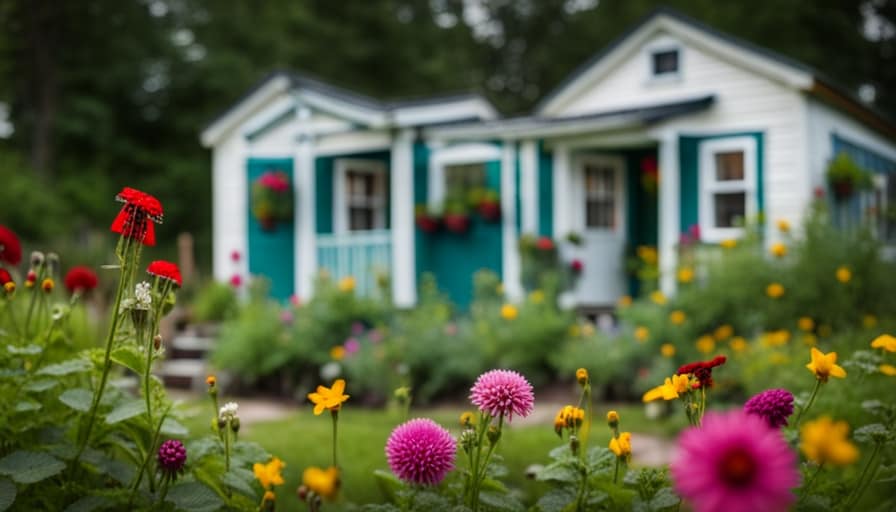
As an individual who has always envisioned a warm and minimalistic escape, I frequently pondered, ‘How can I construct a tiny house?’
Let me guide you through the intricate process, step by step. From meticulous planning and design to selecting the perfect location and foundation, we’ll explore the essential tools and materials needed for construction.
Together, we’ll build the sturdy frame and structure, and optimize every inch of space for functional living.
Get ready to embark on a remarkable journey of creating your very own tiny house.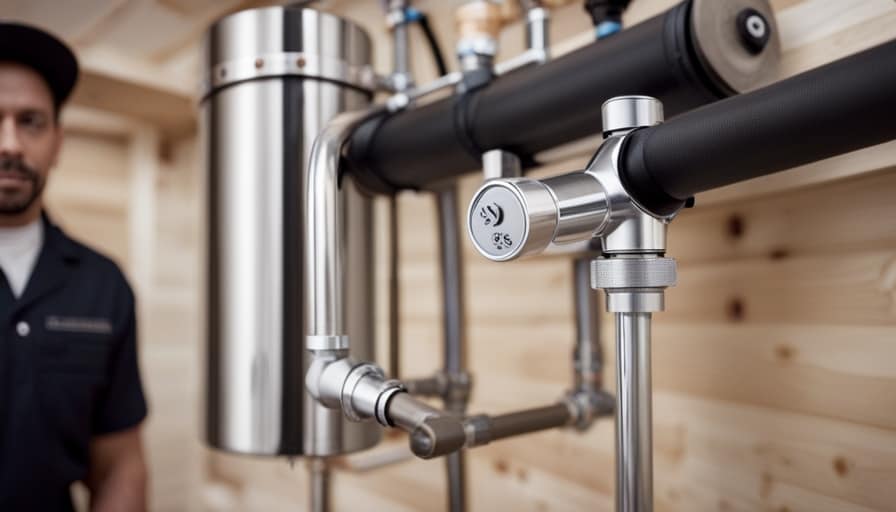
Key Takeaways
- Set a realistic financial plan and stick to it
- Evaluate environmental considerations for the location
- Use essential tools and materials for construction
- Maximize storage and optimize functionality in a limited space
Planning and Designing Your Tiny House
I really enjoy planning and designing my tiny house. It allows me to express my creativity while also considering important factors such as budgeting and financing.
When it comes to budgeting, I make sure to set a realistic financial plan and stick to it. This involves researching the cost of materials and labor, as well as potential additional expenses.
To ensure a sustainable and eco-friendly build, I prioritize using environmentally friendly building materials. This includes options like reclaimed wood, recycled insulation, and energy-efficient appliances. By incorporating these materials into my design, I not only reduce my carbon footprint but also create a healthier living environment.
As I delve into the process of planning and designing, I can’t help but get excited about the next step: choosing the right location and foundation for my tiny house.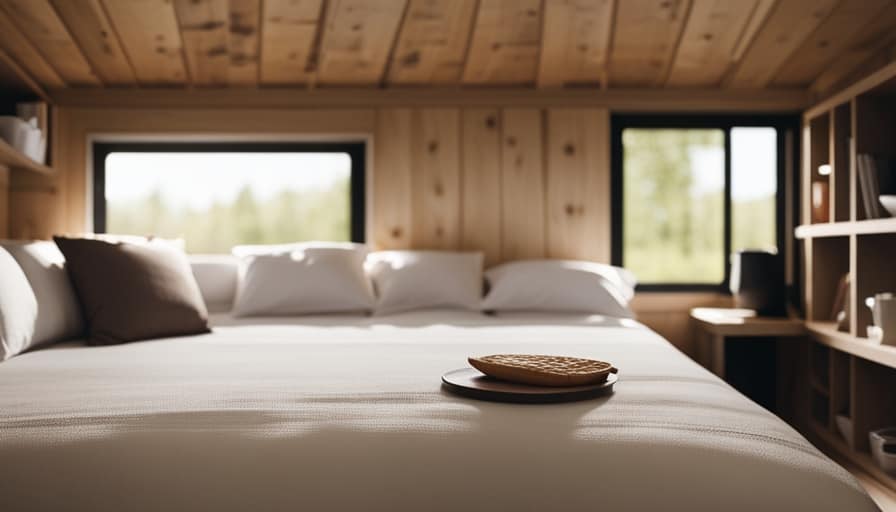
Choosing the Right Location and Foundation
When building a tiny house, it’s important to carefully consider the location and foundation options.
The first step is to evaluate the environmental considerations for the tiny house location. Look for a spot that has ample sunlight for solar panels and isn’t prone to flooding or strong winds. Additionally, consider the proximity to essential amenities like grocery stores, hospitals, and schools.
Next, let’s discuss the types of foundations suitable for tiny houses. One popular option is a trailer foundation, which provides mobility and flexibility. It allows you to easily relocate your tiny house if needed.
Another option is a concrete slab foundation, which offers stability and durability. This foundation is more permanent and requires a solid footing for support.
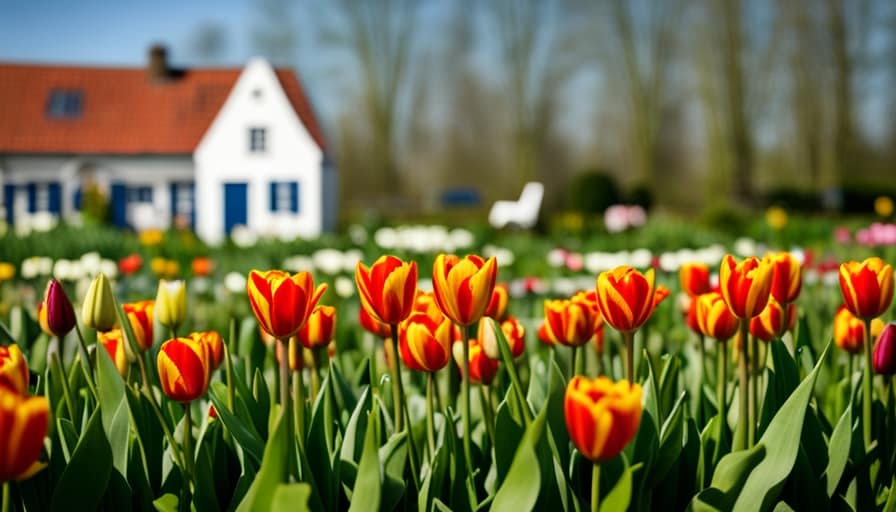
Ultimately, the location and foundation of your tiny house are crucial for its long-term functionality and sustainability. Take the time to research, evaluate, and choose the best options for your needs.
Essential Tools and Materials for Construction
To successfully build a tiny house, you’ll need to gather and organize all the necessary tools and materials for construction. Tool selection and cost estimation are crucial steps in this process. Here is a breakdown of the essential tools and materials you’ll need for building your tiny house:
| Tools | Materials | Cost Estimation (Approx.) |
|---|---|---|
| Hammer | Lumber | $500 |
| Screwdriver | Plywood | $400 |
| Drill | Insulation | $300 |
| Level | Roofing material | $700 |
| Measuring tape | Electrical wiring | $200 |
| Saw | Plumbing pipes | $500 |
| Chisel | Drywall | $300 |
| Clamps | Flooring | $400 |
| Nail gun | Windows and doors | $1000 |
| Paintbrushes | Paint | $200 |
Please note that these cost estimations are approximate and may vary based on location and quality of materials. It is important to thoroughly research and compare prices before making a purchase. By having the right tools and materials, you’ll be well-equipped to begin constructing your tiny house.
Building the Frame and Structure of Your Tiny House
I’ll begin building the frame and structure of my tiny house by laying a solid foundation. This is crucial to ensure stability and durability. I’ll use concrete footings or blocks to create a level and sturdy base.
Next, I’ll construct the floor frame using pressure-treated lumber, ensuring proper support and insulation. Insulating the tiny house is essential to maintain a comfortable temperature inside. I’ll use closed-cell spray foam insulation, which provides excellent thermal performance and helps to reduce energy consumption.
When it comes to plumbing, I’ll carefully plan the layout to maximize space efficiency. I’ll install a water supply system, including pipes, fittings, and fixtures, to ensure a reliable water source. Additionally, I’ll incorporate a wastewater system for proper disposal.
Planning and executing these steps meticulously will result in a well-built and functional tiny house.
Interior Design and Functional Space Optimization
How can I creatively utilize the limited space in my tiny house to optimize both functionality and design? Maximizing storage and finding creative furniture solutions are key to achieving this goal.
Here are some ideas to consider:
-
Built-in storage: Utilize every nook and cranny by incorporating built-in shelves, cabinets, and drawers. This will help keep your belongings organized and minimize clutter.
-
Multi-functional furniture: Invest in furniture that serves multiple purposes, such as a sofa that can transform into a bed or a coffee table with hidden storage compartments.
-
Vertical space utilization: Make use of vertical space by installing wall-mounted shelves, hanging storage organizers, and hooks. This will free up floor space and provide additional storage options.
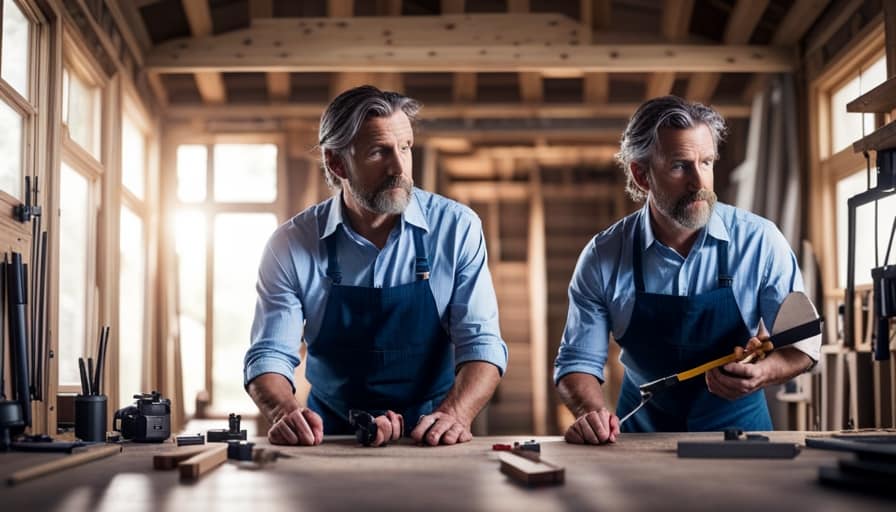
-
Foldable furniture: Opt for foldable tables, chairs, and desks that can be easily stowed away when not in use, creating more room to move around.
Frequently Asked Questions
How Much Does It Cost to Build a Tiny House?
Building a tiny house can vary in cost depending on several factors such as size, materials, and location. However, there are financing options available, such as personal loans or RV loans, to help make your dream of owning a tiny house a reality.
What Permits and Inspections Are Required for Building a Tiny House?
When it comes to building a tiny house, it’s important to understand the permit process and inspection requirements. These steps ensure that your construction is up to code and meets all necessary safety regulations.
Can I Build a Tiny House on Wheels?
Yes, you can build a tiny house on wheels. However, it is important to research and comply with local building codes. The advantages include mobility and flexibility, but there are disadvantages such as limited space and potential challenges with permits and inspections.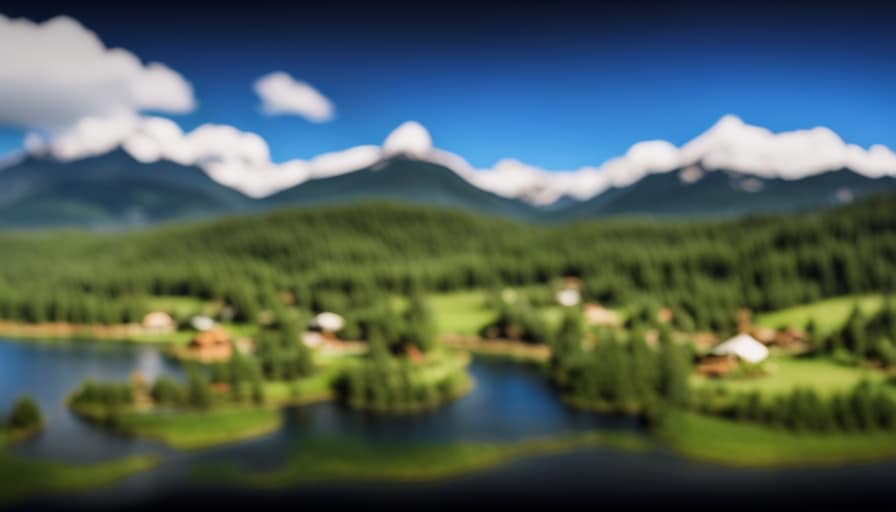
Is It Possible to Connect My Tiny House to Utilities Such as Water and Electricity?
Connecting utilities to a tiny house, like water and electricity, can be challenging. However, there are solutions such as hooking up to existing utility lines or using alternative options for off-grid living, like solar power and rainwater collection.
Are There Any Legal Restrictions or Zoning Regulations for Owning and Living in a Tiny House?
In terms of legal implications, owning and living in a tiny house can come with certain restrictions and zoning regulations. It’s important to research and understand the advantages and disadvantages before embarking on this journey.
Conclusion
In conclusion, building a tiny house requires careful planning, designing, and construction. By considering factors such as location, foundation, and materials, you can create a functional and efficient living space.
With the right tools and techniques, you can successfully build the frame and structure of your tiny house.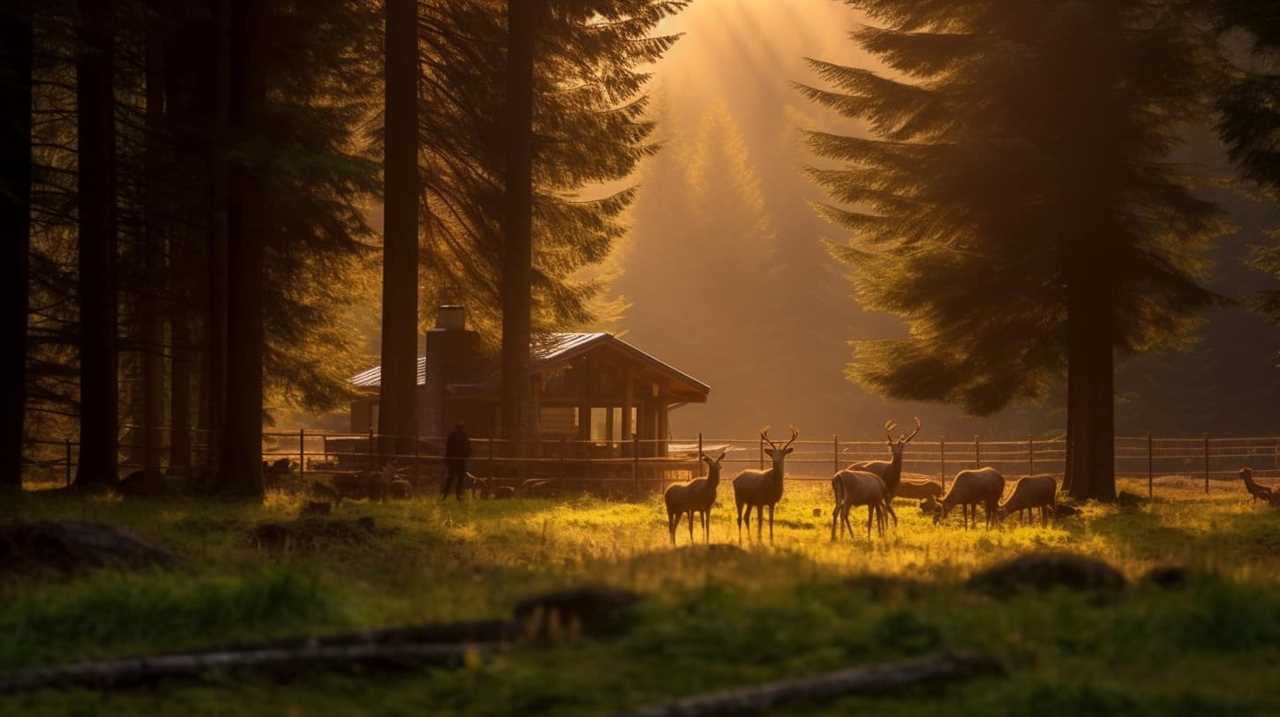
Lastly, don’t forget to optimize the interior design and functional space to maximize comfort and functionality.
So, are you ready to embark on this exciting and rewarding journey of building your very own tiny house?
I’m Theodore, and I love tiny houses. In fact, I’m the author of Tiny House 43, a book about tiny houses that are also tree houses. I think they’re magical places where imaginations can run wild and adventures are just waiting to happen.
While tree houses are often associated with childhood, they can be the perfect adult retreat. They offer a cozy space to relax and unwind, surrounded by nature. And since they’re typically built on stilts or raised platforms, they offer stunning views that traditional homes simply can’t match.
If you’re looking for a unique and romantic getaway, a tree house tiny house might just be the perfect option.
General Energy Topics
How Do I Buy a Tiny House

I am here to help you navigate the thrilling adventure of purchasing a tiny house! With a plethora of choices out there, it can feel daunting, but don’t worry, I’ve got you covered.
In this article, we’ll explore the steps to take in order to find your perfect tiny home. From researching options and setting a budget, to finding a reputable builder or seller, and finally, making an offer and closing the deal.
Let’s dive in and make your tiny house dreams a reality!
Key Takeaways
- Research and compare different builders and models, considering factors such as size, layout, and functionality.
- Set a budget and explore financing options that align with your financial goals, including eco-friendly financing options.
- Thoroughly research and vet potential builders or sellers, considering their expertise, reputation, and unique architectural styles.
- Inspect the interior and exterior of a potential tiny house for any signs of damage or structural issues before making a purchase.
Researching Tiny House Options
Before I start looking at tiny house options, I should research and compare different builders and models. This step is crucial in ensuring that I make an informed decision about the type of tiny house that suits my needs and preferences.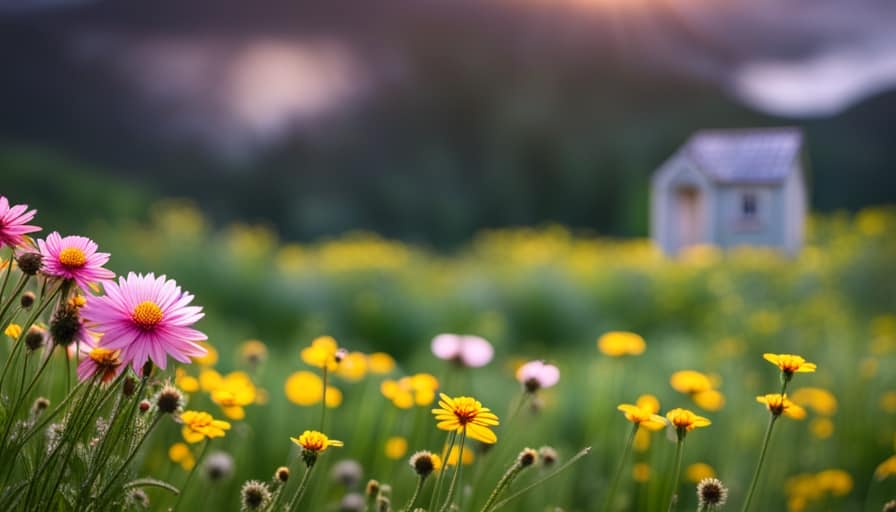
When researching tiny house designs, it’s important to consider factors such as size, layout, and functionality. Some builders specialize in specific styles, while others offer a wide range of options.
Additionally, it’s essential to familiarize myself with zoning regulations in my desired location. Each area may have different requirements and restrictions regarding tiny houses, such as size limitations or where they can be placed.
Setting a Budget and Financing
To purchase a tiny house, I’ll need to carefully determine my budget and explore financing options.
Setting a budget is essential to ensure that I can afford all the necessary expenses associated with buying and maintaining a tiny house. First, I need to consider the cost of the actual house, which can vary depending on its size, features, and materials used. Additionally, I must factor in any land or parking fees, utilities, insurance, and maintenance costs.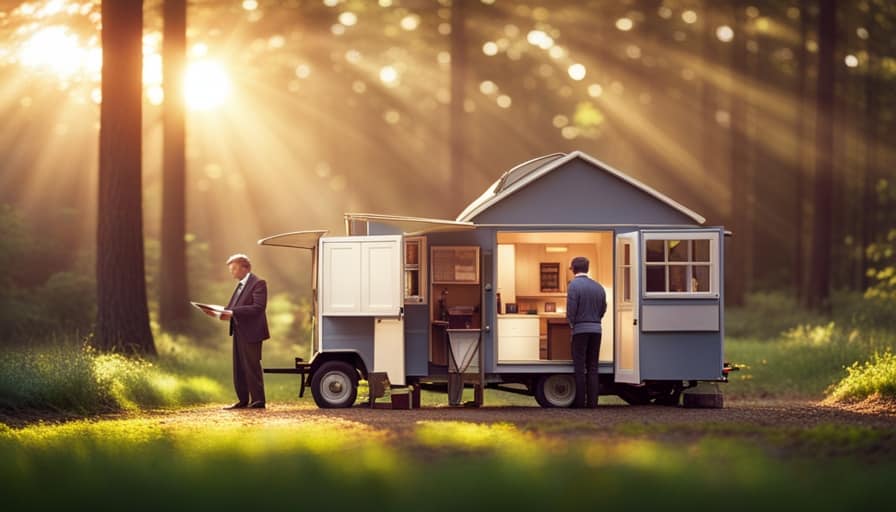
Financing options for tiny houses include personal loans, RV loans, or even crowdfunding. It’s important to choose a financing option that aligns with my financial goals and allows me to make affordable monthly payments.
Lastly, considering the sustainability aspect, I should explore eco-friendly financing options that support green initiatives and promote sustainable living.
Finding a Tiny House Builder or Seller
I need to find an experienced tiny house builder or seller who can help me navigate the process of purchasing my dream home. When looking for a tiny house builder or seller, it’s important to consider their expertise in tiny house design and their reputation within the tiny house community.
You can start your search by visiting tiny house websites and forums, where you can find listings of builders and sellers. Additionally, attending tiny house events and workshops can provide you with opportunities to meet builders and sellers in person.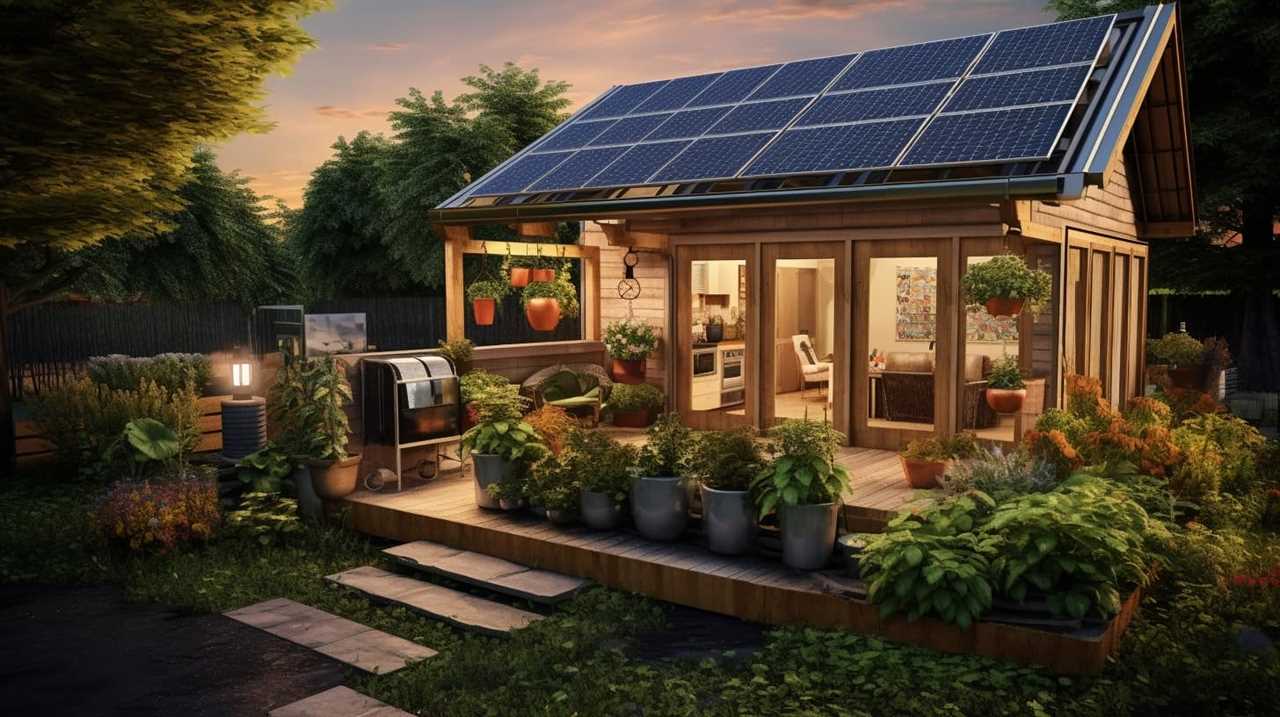
It’s crucial to thoroughly research and vet potential builders or sellers to ensure they’re reputable and can deliver the quality and design you desire.
Now that you know how to find a builder or seller, let’s move on to the next step of inspecting and evaluating a potential tiny house.
Inspecting and Evaluating a Potential Tiny House
When evaluating a potential tiny house, I should thoroughly inspect the interior and exterior for any signs of damage or structural issues. It’s crucial to ensure that the tiny house is in good condition before making a purchase. Here are some key areas to focus on during the inspection:
-
Foundation: Check for any cracks or signs of shifting in the foundation. A solid foundation is essential for the structural integrity of the tiny house.
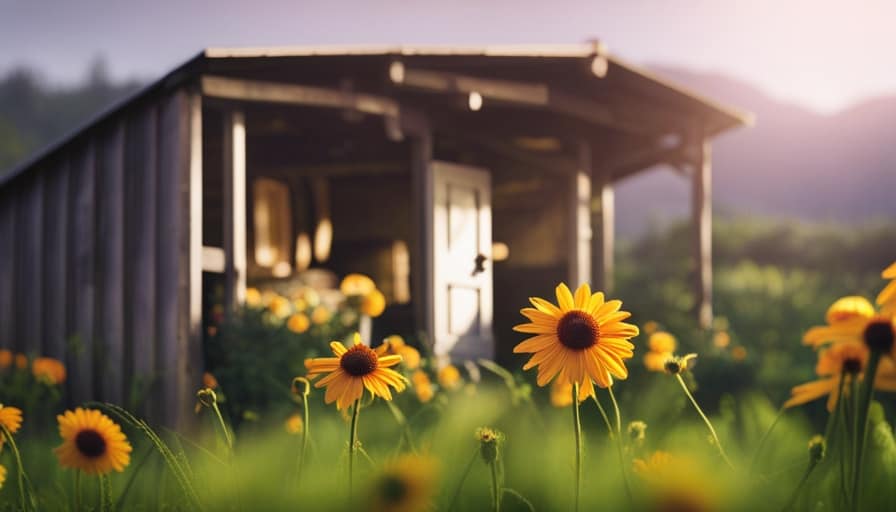
-
Roof: Inspect the roof for any leaks, missing shingles, or signs of water damage. A well-maintained roof will protect the interior from potential water issues.
-
Electrical and Plumbing: Test the electrical outlets, switches, and plumbing fixtures to ensure they’re in working order. Faulty electrical or plumbing systems can lead to costly repairs down the line.
Making an Offer and Closing the Deal
Securing financing is a crucial step in making an offer and closing the deal on a tiny house. Once you have found the perfect tiny house and have determined its value through inspection and evaluation, it’s time to negotiate the terms with the seller. This is where the table below can be helpful in outlining the key points of the negotiation process:
| Negotiating Terms | Legal Considerations | Financing Options |
|---|---|---|
| Purchase Price | Contract Terms | Bank Loan |
| Down Payment | Title and Ownership | Personal Loan |
| Closing Costs | Inspection Contingency | RV Loan |
| Repairs and Upgrades | Zoning Regulations | Seller Financing |
| Move-in Date | Insurance | Friends and Family Loan |
Remember to consult with a real estate attorney to ensure all legal considerations are met. Once the negotiations are complete, it’s time to close the deal by signing the necessary documents and transferring the funds. With proper planning and attention to detail, you’ll soon be the proud owner of a tiny house.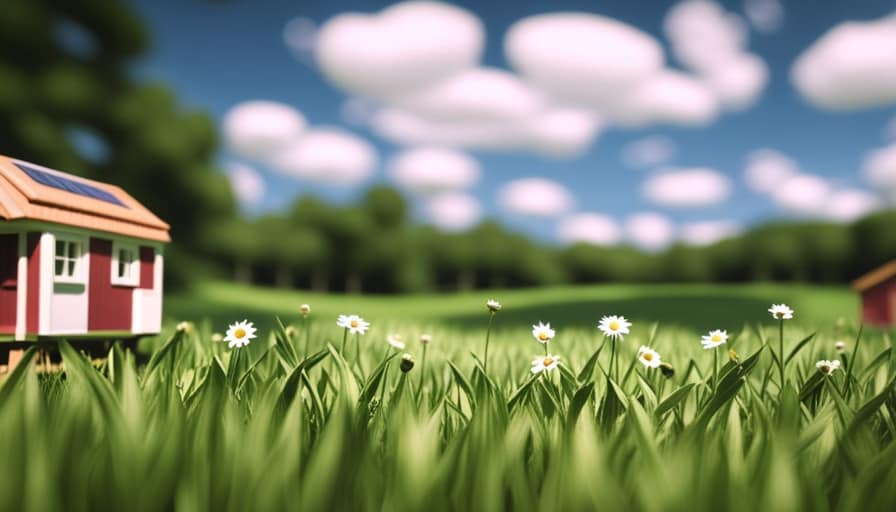
Frequently Asked Questions
What Are the Legal Requirements for Owning and Living in a Tiny House?
To own and live in a tiny house, you must comply with legal requirements and building codes. These regulations vary by location, so it’s crucial to research and understand the specific rules in your area.
How Do I Find Land to Park My Tiny House On?
Finding suitable land for a tiny house can be challenging. Navigating zoning restrictions is key. Research local regulations, connect with real estate agents, and explore alternative options like tiny house communities or renting land from private landowners.
Can I Build My Own Tiny House or Do I Have to Buy One?
I can either build my own tiny house or buy one. Building allows for customization but requires time and skills. Buying offers convenience but can be more expensive. It’s important to compare costs and consider personal preferences.
What Are Some Common Challenges of Living in a Tiny House?
Living in a tiny house presents challenges, but the benefits outweigh them. Limited space requires creative organization, and adjusting to a downsized lifestyle can be a challenge. However, the simplicity and financial freedom are rewarding.
Are There Any Zoning Restrictions or Regulations That I Should Be Aware of When Considering a Tiny House?
Zoning restrictions and tiny house regulations are important to consider before buying a tiny house. It’s crucial to research local laws and regulations to ensure compliance and avoid any potential issues down the line.
Conclusion
In conclusion, buying a tiny house can be an exciting and rewarding experience.
Did you know that the average cost of a tiny house in the United States is around $60,000? With careful research and planning, you can find the perfect tiny house that fits your budget and lifestyle.
Remember to thoroughly inspect and evaluate any potential options before making an offer.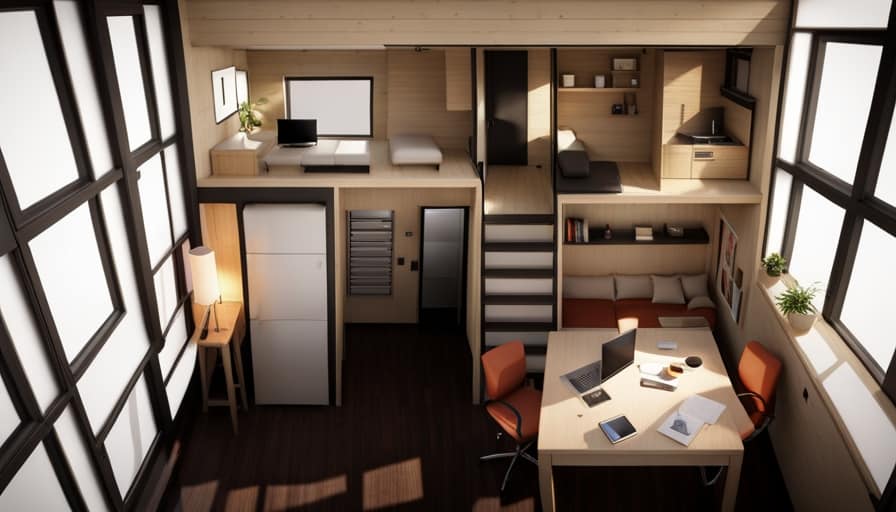
Good luck on your journey to owning a tiny house!
I’m Theodore, and I love tiny houses. In fact, I’m the author of Tiny House 43, a book about tiny houses that are also tree houses. I think they’re magical places where imaginations can run wild and adventures are just waiting to happen.
While tree houses are often associated with childhood, they can be the perfect adult retreat. They offer a cozy space to relax and unwind, surrounded by nature. And since they’re typically built on stilts or raised platforms, they offer stunning views that traditional homes simply can’t match.
If you’re looking for a unique and romantic getaway, a tree house tiny house might just be the perfect option.
-

 Beginners Guides3 months ago
Beginners Guides3 months agoHow To Buy A Tesla Tiny House
-

 Energy Efficiency3 weeks ago
Energy Efficiency3 weeks agoBest Tiny Homes For Cold Climates
-

 Beginners Guides3 months ago
Beginners Guides3 months agoTiny House Nation Where Are They Now Stephanie
-

 Tiny House Resources (e.g., legalities, cost, insurance, FAQs)1 month ago
Tiny House Resources (e.g., legalities, cost, insurance, FAQs)1 month agoDo Tiny Homes Need Planning Permission?
-

 Beginners Guides3 months ago
Beginners Guides3 months agoFrom The Show Tiny House Nation How Many Keep Their Tiny House?
-

 Beginners Guides1 month ago
Beginners Guides1 month agoUsing a Climbing Net For Treehouse Construction
-

 Beginners Guides1 month ago
Beginners Guides1 month agoHow to Build a Treehouse Without Drilling Into the Tree
-

 Beginners Guides1 month ago
Beginners Guides1 month agoHow to Build a Treehouse Rope Bridge




